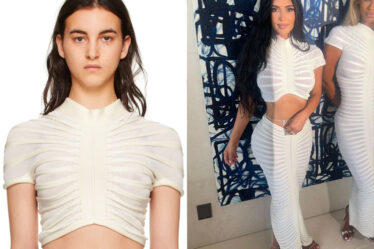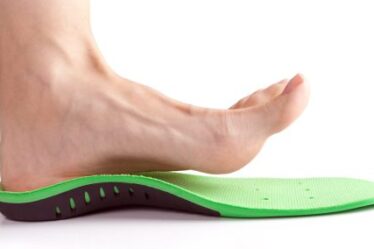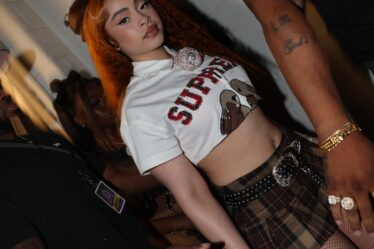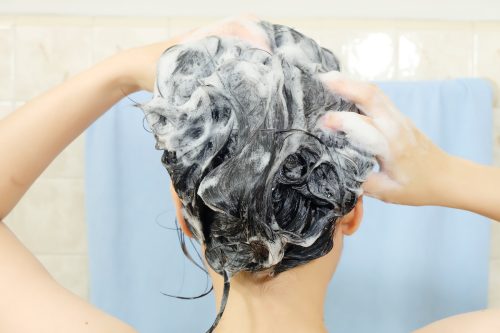
Going gray before the age of 50 is referred to as premature graying. It can be due to several factors, “including genetics, stress, nutritional deficiencies, and certain medical conditions,” according to Akirashanti Byrd, co-founder and CEO of Curl Centric. Regardless of the cause, there’s no way to reverse the process—but there are some tricks of the trade that can help younger people manage, care for, and embrace their newly-hued hair while maintaining their youthful vibrancy. Read on to hear from hairstylists about the best tips for going gray before 50. With the right mindset and haircare routine, you’ll have healthy locks for years to come.
READ THIS NEXT: 5 Benefits of Letting Your Hair Go Gray, According to Stylists.
The reason hair turns gray is that it stops producing the pigment called melanin, explains Byrd. “Melanin gives hair color its richness and depth.” Because cells also slow down the production of natural oils, gray hair is usually coarser and drier than fully pigmented hair.
However, if you’ve just started to go gray, you may only have a small percentage of hair that has turned. If you’re not ready to let the silver strands shine through, consider a short-term coloring wash for a milder solution than a full dye job.
Dian Griesel, PhD, an influencer, Wilhelmina model, and founder of Silver Disobedience, tells Best Life that she was almost entirely gray by age 40. “When I decided to let it grow in, I used a 28-day wash-out hair color that was close to my natural tone,” she explains. “Each month, I’d reapply it and trim from the ends an equal amount to what had grown in at the roots.” Griesel says that it took her about three years using this process to be at her fully grown-out state. From there, she continued using the 28-day wash but chose a lighter color each time until she was platinum blonde (and until she decided to go fully gray!).
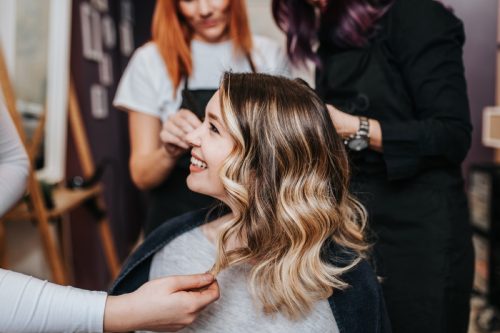
Even if you’ve been getting highlights your whole life, you’ll want to talk to your hairstylist about the best techniques to disguise and blend gray hair. Depending on your natural hue, you may want to opt for highlights or lowlights that create depth and make the grays less noticeable, notes Byrd. “You can also try a color technique called balayage, which is when your natural hair color is blended with lighter highlights. This can help to give the illusion of less gray hair.”
READ THIS NEXT: The 5 Best Hairstyles for Gray Hair, According to Experts.
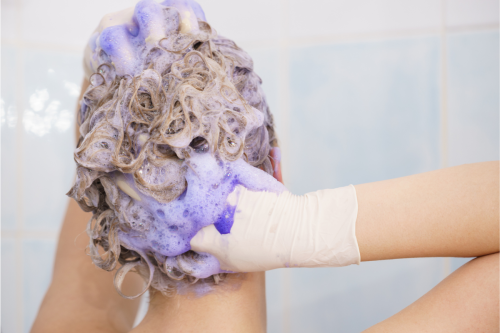
The absence of melanin and natural oils in gray hair means that you’ll need to invest in specially formulated hair care products. The most common recommendation is purple shampoo and conditioner, as the violet undertones prevent gray hair from yellowing.
However, not all gray hair is created equal. “It’s important to know whether you tend towards white, gray, silver, or titanium tones,” notes Griesel. “While purple shampoos are touted as ‘for gray hair,’ they are not the best choice for daily use for white hair … unless you purposely want to be a lovely shade of lilac!”
Lisa Abbey, professional hairstylist and founder and CEO of Strength x Beauty Hair Care, also suggests using sulfate-free products, “as sulfates can be very drying and strip the scalp of necessary oils.” Consult with your stylist about the best products for your hair.
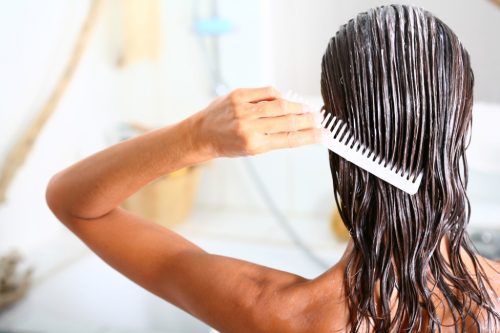
Purple shampoo may do wonders for the color of your hair, but it doesn’t necessarily address the dry nature of gray strands. “The best way to keep gray or white hair healthy, soft, and manageable is to make sure it’s hydrated,” says Abbey. “Switch to a hydrating shampoo and daily conditioner, adding in a heavier conditioning mask once a week. You can also use a co-wash (conditioning wash) for even more hydration.”
If your hair is especially dry, Abbey recommends doing a reverse wash, where you condition before shampooing. “It helps because the pH of water opens the hair cuticle to accept the conditioner deep into the cortex of the hair, and then the pH of shampoo closes the cuticle to lock in the moisture, resulting in gray hair that is softer and more manageable.”
And, of course, the easiest way to help with dryness is to wash your hair less often. “Leaving a bit of your natural essential oils is key and shampooing too often can really dry it out,” says Abbey.
For more beauty advice delivered straight to your inbox, sign up for our daily newsletter.
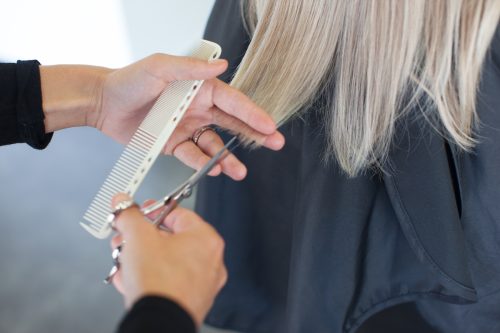
In addition to changing up what products you’re using, you’ll also want to revisit how frequently you hit the salon. “Because gray hair is drier in texture, the ends are more prone to splitting and because the texture is different, your hair will lose its shape more quickly,” explains Abbey.
Griesel agrees with this and says that regular trims have kept her gray hair “looking shapely and sharp.” She refers to these as “invisible trims” and notes that she trims off a quarter of an inch about every six weeks.

Remember we mentioned gray hair can turn yellow? This can happen from the pollution in the air, the sun, and even your styling tools.
“Heat products do seem to trigger yellowing,” notes Griesel. She shares that she avoids heat styling. “I like to be up early enough to wash my hair and let it dry naturally,” she adds. “Then to style it, I throw in some electric curlers which stay in only as long as it takes me to moisturize my face and add a bit of makeup. They’re in my hair for tops five minutes.” Plus, heat styling will damage your hair and add to its dryness.
READ THIS NEXT: 5 Secrets for Growing Out Gray Hair, According to Stylists.

Whether you’re 25 or 45, you should feel empowered to rock whatever hair color you feel like, including your natural gray. “Hair color is a personal choice. It’s fun and changeable,” says Griesel. “I’ve had every color—literally—that hair can be dyed. The good thing is—until we lose it, it grows back.” And let us note that it’s Griesel’s long, beautiful, silvery hair that caught the attention of the Wilhelmina modeling agency.

